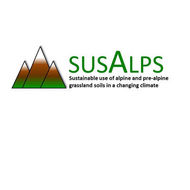Interspecific trait variability and local soil conditions modulate grassland model community responses to climate (2022)
Alongi F., Rüthers J., Giejsztowt J., LaPaglia K., Jentsch A.
Ecology and Evolution, 12 (2),
Abstract
AbstractMedium‐to‐high elevation grasslands provide critical services in agriculture and ecosystem stabilization, through high biodiversity and providing food for wildlife. However, these ecosystems face elevated risks of disruption due to predicted soil and climate changes. Separating the effects of soil and climate, however, is difficult in situ, with previous experiments focusing largely on monocultures instead of natural grassland communities. We experimentally exposed model grassland communities, comprised of three species grown on either local or reference soil, to varied climatic environments along an elevational gradient in the European Alps, measuring the effects on species and community traits. Although species‐specific biomass varied across soil and climate, species' proportional contributions to community‐level biomass production remained consistent. Where species experienced low survivorship, species‐level biomass production was maintained through increased productivity of surviving individuals; however, maximum species‐level biomass was obtained under high survivorship. Species responded directionally to climatic variation, spatially separating differentially by plant traits (including height, reproduction, biomass, survival, leaf dry weight, and leaf area) consistently across all climates. Local soil variation drove stochastic trait responses across all species, with high levels of interactions occurring between site and species. This soil variability obscured climate‐driven responses: we recorded no directional trait responses for soil‐corrected traits like observed for climate‐corrected traits. Our species‐based approach contributes to our understanding of grassland community stabilization and suggests that these communities show some stability under climatic variation.